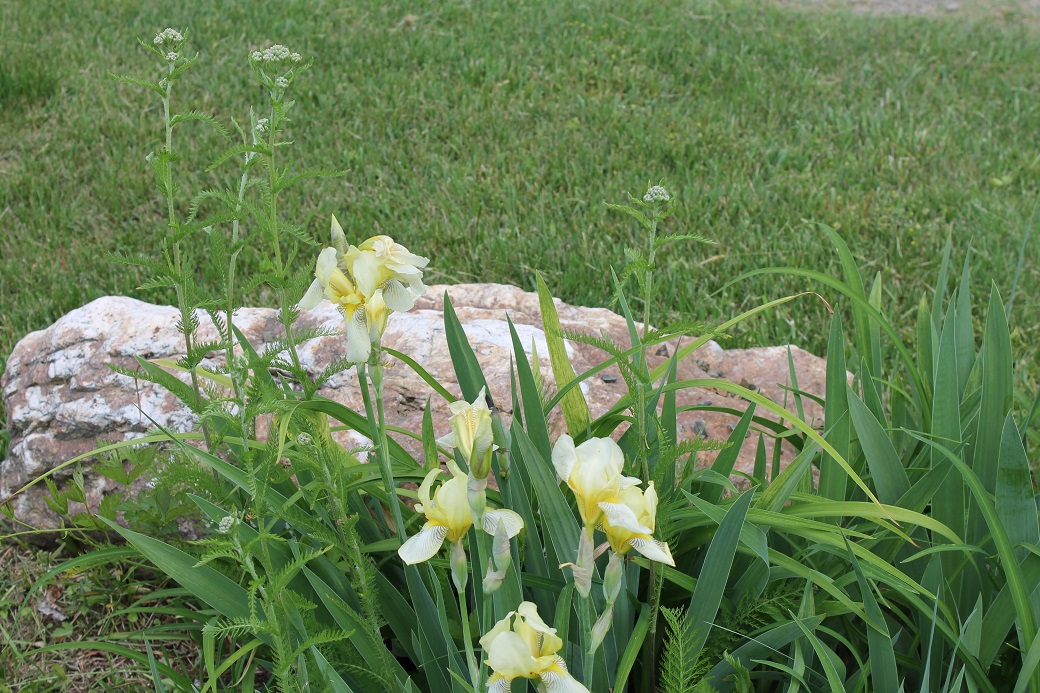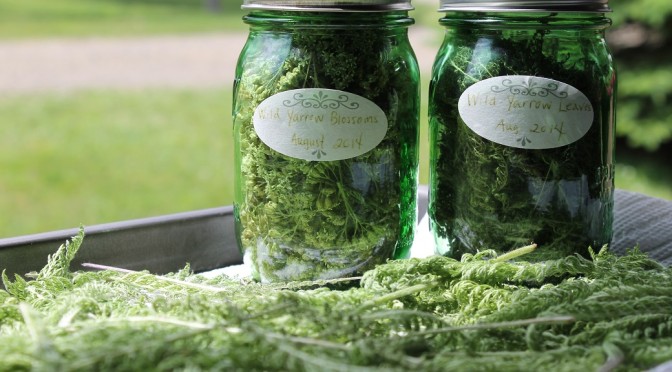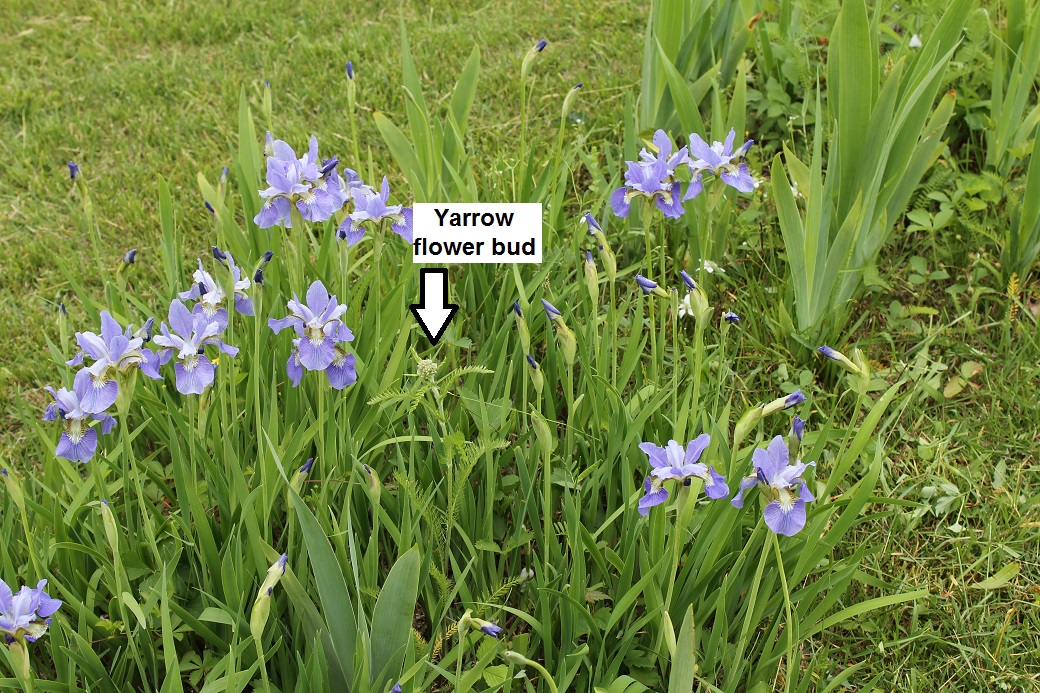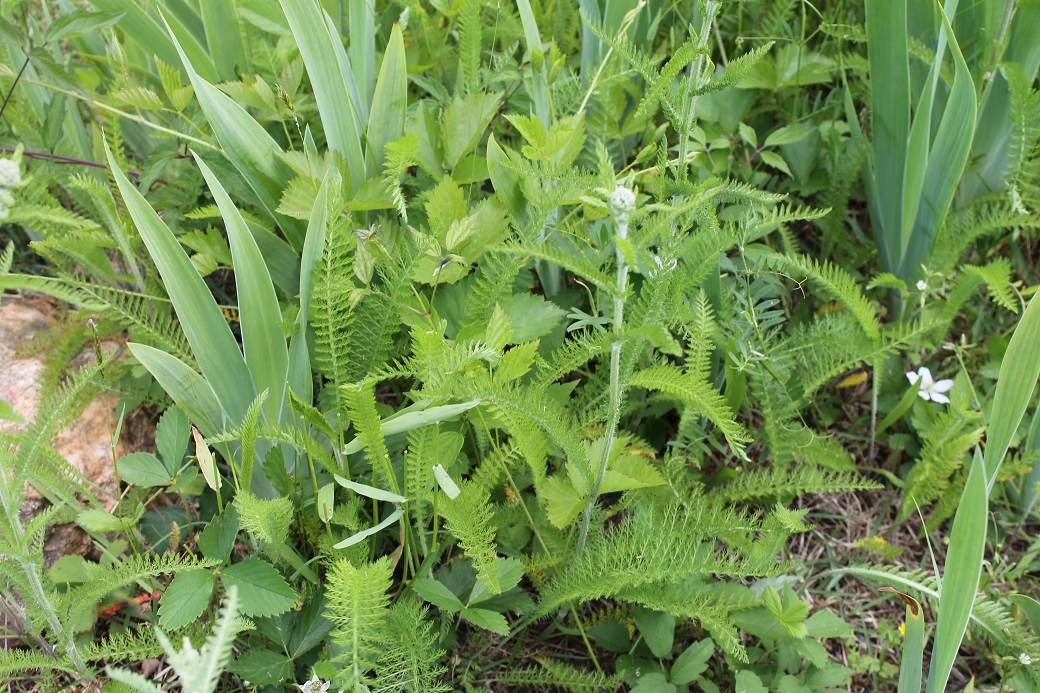From Mrs. Cog’s Corner
The content on this page is for discussion purposes relating to health and well being only and is not intended to be medical advice. Links and sources provided are for informational purposes and do not represent an endorsement of a person, product or treatment.
“If I’m allowed only one herb to use for medicine, it’d be Yarrow that I choose.” - An unknown Civil War doctor
Our homestead came with beautiful perennial flowers along the road. Before I started ‘weeding’ these clearly wild and prolific beds, I tried to look up most of what was growing there. In between the irises and daffodils and lilies are thick beds of yarrow, yet another gift from this mountain, but I read that it grows most everywhere.
Looking like a delicate mini fern, yarrow is a common and prolific herb often labeled as a weed. With white flowers similar to and often confused with Queen Anne’s Lace, the fern like leaves distinguish it as the valuable plant it is.
Yarrow is an amazing herb and it has been used throughout history for healing and preventative properties. Legend says as a baby, the Spartan hero Achilles was bathed in yarrow for protection. The exception was where he was held… you guessed it, at his heel, thus his only weakness. Many stories and examples of ways Yarrow was used as a prized medicinal tool can be found in the links below.

Of its more common uses, crushed leaves of the yarrow plant, either fresh or dried, can stop bleeding as well as act as an antiseptic. This also makes it a great choice for bee stings and bug bites.
Yarrow is frequently used as a cold and flu remedy. Able to help break a fever and open our pores, yarrow induces sweating to expel toxins that ail us. As with its ability to stop bleeding, yarrow is an astringent and contracts mucus membranes allowing them to dry and drain properly.
Other benefits to using yarrow include chewing leaves to relieve toothaches, as a hemorrhoid remedy and to help treat heavy menstrual symptoms. As a diuretic, it help flush toxins from the kidneys, provides relief from cystitis and sooths a myriad of gastro conditions.
The young leaves of yarrow can be eaten fresh and added to salads. The flowers blossom throughout the summer months and can be collected regularly. The leaves and blooms can be used in tinctures, poultices, bath additives and as tea. In tea, yarrow tastes bitter, so we like to add a spoonful of raw honey.
For a second year, I am simply cutting and drying the leaves and blossoms. Once they are completely dry, usually after 2-3 weeks, I vacuum seal them in a jar for later use. They are stored in a cool dry place.
Because it is so easy to grow and collect and its applications so numerous, I would recommend everyone seed some yarrow nearby, even if it requires a bit of guerrilla gardening. Once the plant takes, it will forever reseed itself and grow on its own with no human effort. I see this as another healthy and organic way to prepare to be responsible for our own wellness.
Note: Yarrow should not be consumed or used topically if you are pregnant.
More Information:
In China, Yarrow is also used for divination however, the practice is of quite a different order. The ancient oracle of the I Ching is traditionally cast with Yarrow stalks which are thought to represent the Yin and Yang forces of the Universe in perfect balance. http://www.sacredearth.com/ethnobotany/plantprofiles/yarrow.php
Yarrow as a Wound Healer: This is perhaps yarrow’s most famous and most ancient use. Yarrow was found amongst other medicinal herbs in the Neanderthal burial site in Iraq which dates from around 60,000 BC and has become famous in herbal medicine as one of the earliest indications of human’s use of medicinal plants. http://whisperingearth.co.uk/2011/09/28/the-multiple-benefits-and-uses-of-yarrow/
Native Americans also knew of yarrow’s incredible healing power for wounds and bruises, and in fact it is one of the sacred Life Medicines of the Navajo tribe. If you bruise easily, yarrow is a good daily supplement for you. The active constituents in yarrow make it a wonderful antiseptic, antibacterial, hypotensive, hypoglycemic, astringent, anti-inflammatory, anti-fungal, emmenagogue, and tonic. Thank goodness for Medicine Men! http://essentialsurvival.org/yarrow-legend-medicinal-use/
A perennial herb, Yarrow is found world wide and grows almost in all places. The plant can be found flourishing in waste lands, countryside, meadows, pastures, edges of the railway tracks, along the highways and in many other places. Yarrow is a plant that I’ll never be without. It has such lovely flowers, but beyond that, it’s proven its place in my garden many times over - stopping bleeding, stopping pain, preventing infection - the examples I could give you where this plant has been used in my own experience would be more than you’d want to read! Suffice it to say, if you don’t grow anything else medicinally, you should grow this, and keep a jar of dried yarrow with you always! Best first aid emergency kit you’ll ever need! http://www.spiritguidedhealer.com/herbs/yarrow.html
All over the world, herbal medicinal traditions have embraced yarrow. It goes back millennia in Ayurvedic and Chinese medicine and was used in Native American medicine throughout North America. Indeed, a Neanderthal skull in Spain, from about 50,000 years ago, had traces of yarrow in his or her teeth. http://khkeeler.blogspot.com/2014/04/plant-story-yarrow-achillea-millefolium_6.html


